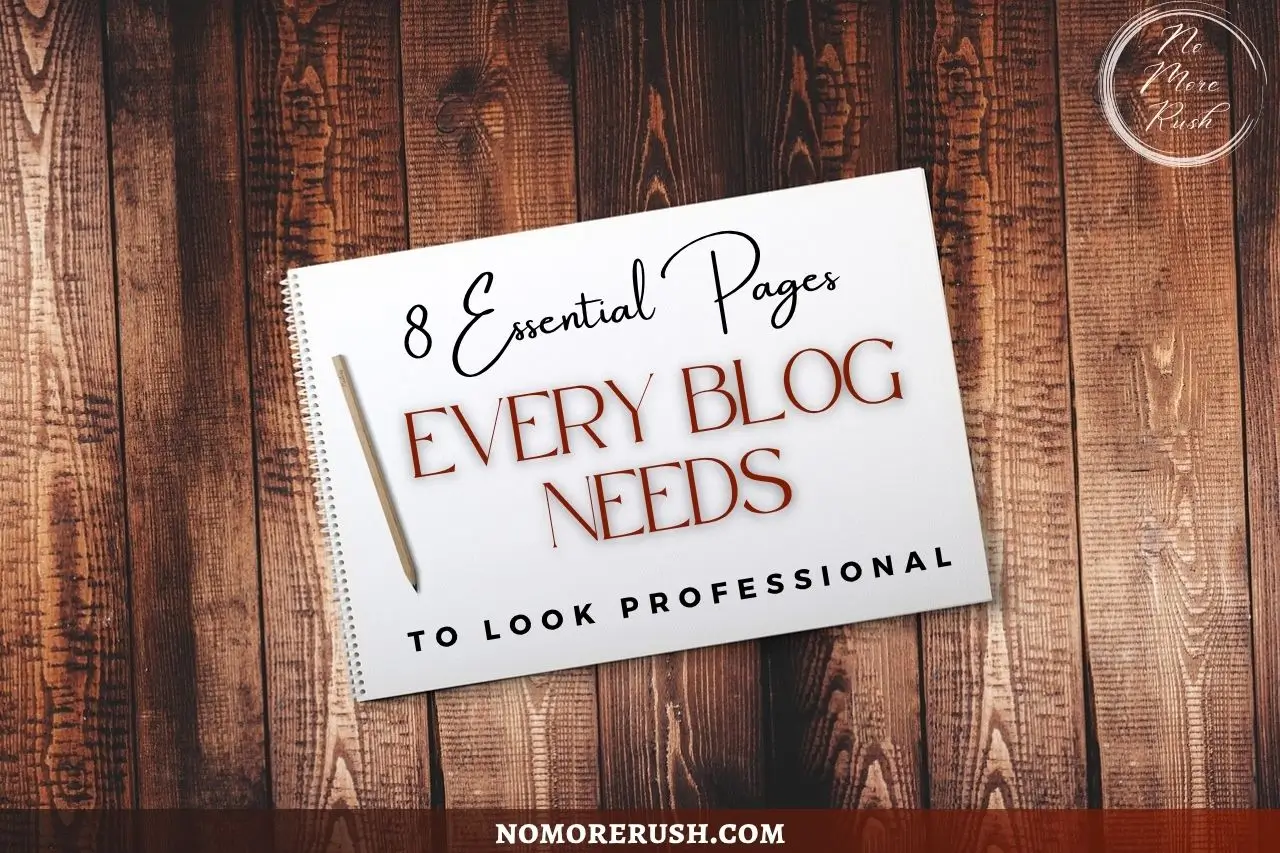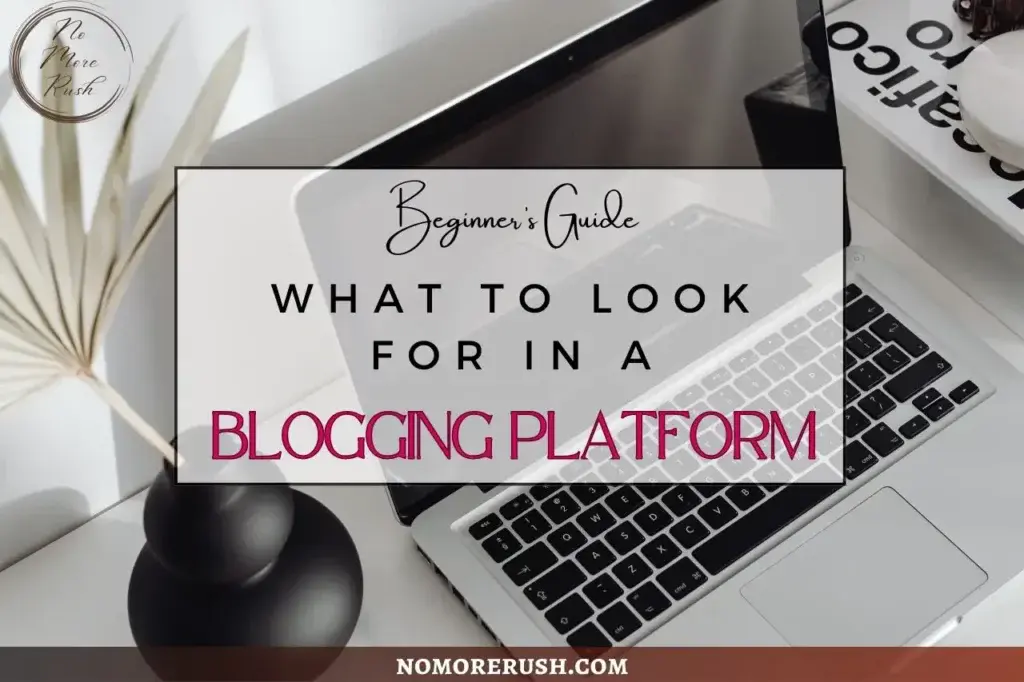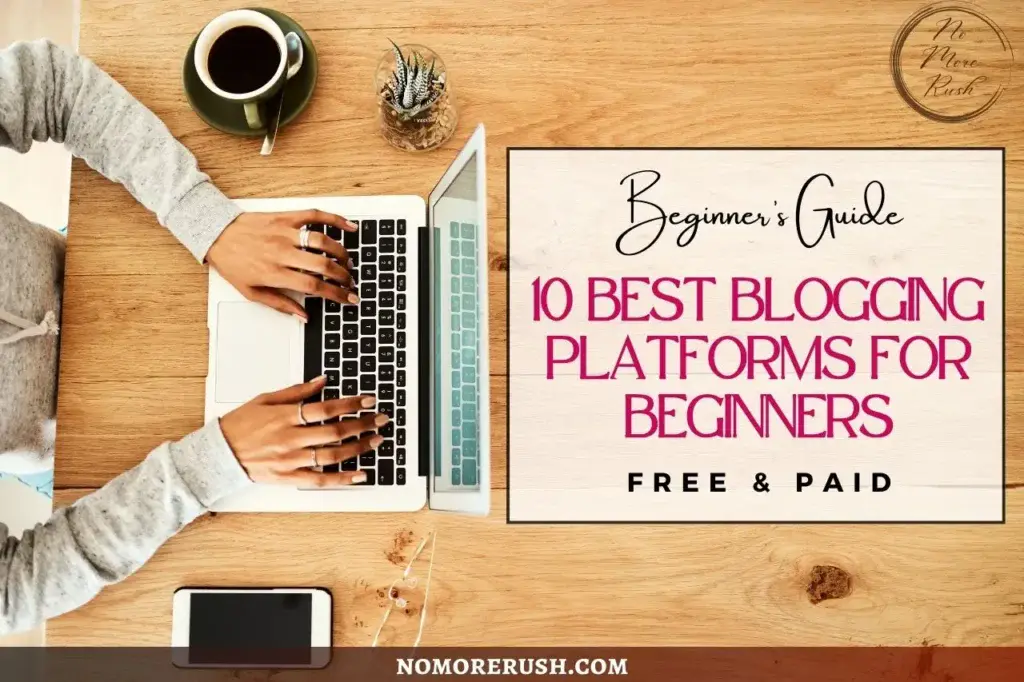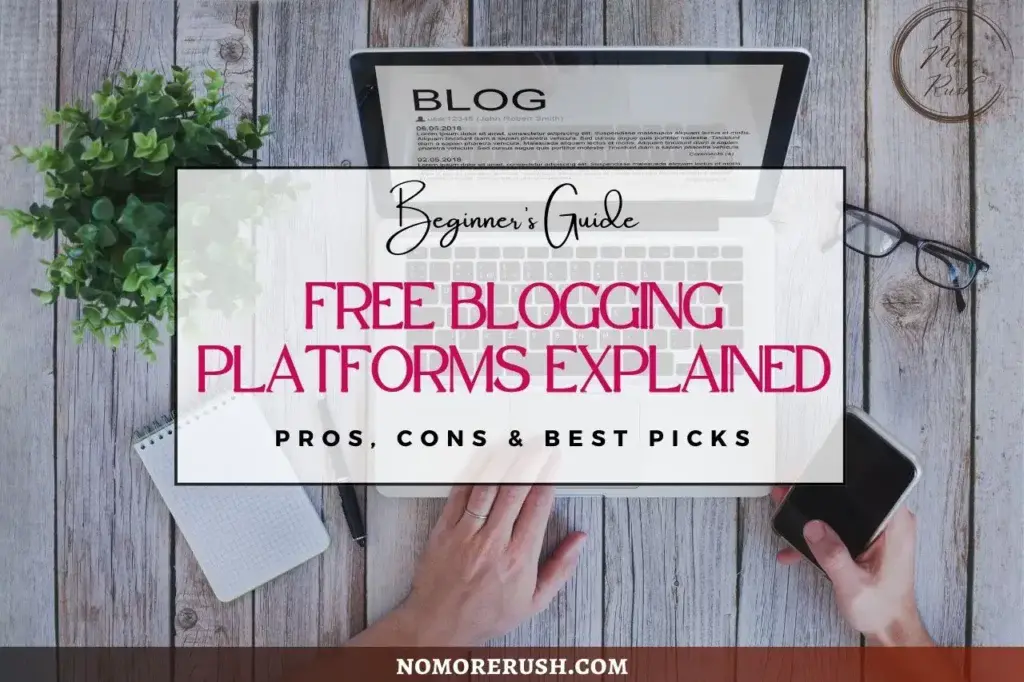When you’re starting a blog, it’s easy to get caught up in all the fun stuff like picking a theme, designing your homepage, creating an awesome logo, or tweaking your fonts for the tenth time. But while you’re busy making your blog look good, there’s something even more important that often gets overlooked, and that’s the essential pages every blog needs to function, build trust, and grow.
We’re talking about the behind-the-scenes pages that help you look legit, protect your blog legally, guide your readers, and even make you money down the line. And no, you don’t need a million of them to start.
In this post, I’ll walk you through the essential blog pages every beginner should set up (and a few optional ones that are totally worth considering). Whether you’re blogging as a hobby or hoping to turn it into an online business, this list will help you set up your blog with the most important pages so that you look like a pro right from the get-go.
Let’s jump straight in.
1. An About Page
Your About page is often one of the most visited pages on a blog, especially when someone is trying to decide whether to stick around, trust your advice, or sign up for your email list.
People don’t just connect with content, they connect with people, so don’t be afraid to share a bit of your story, your mission, and why you started your blog.
Whether you’re teaching, inspiring, or just sharing your journey, your About Page builds that first layer of trust.
What to Include:
- A short backstory of who you are and why you started your blog.
- What readers can expect from your blog (topics, tone, value).
- A photo of you (optional, but it helps!).
- A friendly, approachable tone – write like you’re talking to a real person.
- A call-to-action at the end (e.g. read your latest post, sign up for your freebie, visit your blog categories).
Pro Tip: Don’t make your About page all about you. Frame it around how your experience, story, or mission can help them, your reader.
2. A Contact Page
If someone wants to collaborate, feature you, ask a question, or even hire you, they need a way to reach you. A missing or hard-to-find Contact Page can make your blog feel like a dead end, so it’s really important to include one. You don’t need anything fancy, just a clear, easy-to-use way for people to get in touch.

Even if you’re not offering services or working with brands yet, having a Contact Page shows you’re open and professional.
What to Include:
- A simple contact form (or email address if you prefer).
- Optional: Links to your social media platforms.
- A short sentence or two about what kinds of messages you’re open to (e.g. collaborations, questions, feedback).
- Optional: Add a friendly note about response times or availability.
Pro Tip: Use a plugin like WPForms or Contact Form 7 to add a quick form to your page. It saves you from having to list your email publicly (which can attract spam).
3. A Privacy Policy Page
A Privacy Policy isn’t just a nice-to-have; it’s legally required in many places if you’re collecting any personal data from your visitors. This includes things like names, emails, cookies, or even basic analytics. If you use tools like Google Analytics, display ads, or offer a newsletter signup, you need one.
It builds trust with your audience and protects you legally.
What to Include:
- What information you collect (e.g., email addresses, cookies, IP addresses).
- How you collect it (e.g., forms, cookies, third-party tools).
- Why you collect it (e.g., email marketing, site improvement).
- How users can opt out or contact you with questions.
- Disclosure of any third-party tools (like Google Analytics or affiliate programs).
Pro Tip: You can use free online generators like Termly or PrivacyPolicies.com to create a basic Privacy Policy. Just be sure to review and customise it for your specific blog setup.
4. An Affiliate Disclosure Page
If you’re recommending products or services and using affiliate links, a disclosure isn’t optional; it’s legally required by the FTC (U.S.) and many other international guidelines.
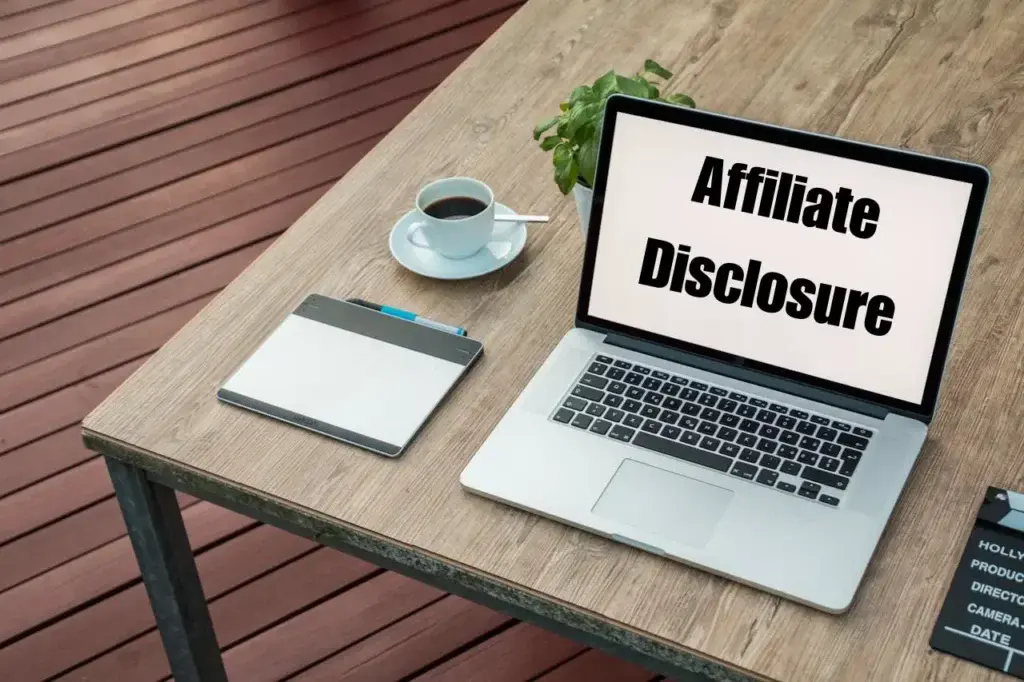
Beyond legality, it’s also about transparency. Your readers deserve to know when a link could earn you a commission.
What to Include:
- A clear statement that some links are affiliate links and that you may earn a commission (at no extra cost to them).
- A brief explanation of how affiliate links work.
- Optional: A note that you only recommend tools/products you genuinely believe in.
Most bloggers also place a short disclosure at the top of any posts that include affiliate links and add a link from it to a full disclosure page. If you want to learn how to add a short disclosure to the top of your posts automatically, check out my simple tutorial here.
Pro Tip: Create a standalone Affiliate Disclosure page that explains your approach to affiliate marketing (there are lots of free templates online). Then, add a one-liner in each blog post with affiliate links that states something like: “This post may contain affiliate links. Please read my disclosure for more info.” with the word “disclosure” linking to the full page (see mine at the top of this post as an example).
5. A Disclaimer Page
A disclaimer protects you legally by setting boundaries around the information you provide. Whether you’re sharing tutorials, blogging advice, health content, or financial tips, a disclaimer helps limit your liability if someone misuses your content or doesn’t get the results they expected.
What to Include:
- A statement that the information on your blog is for general informational purposes only.
- Clarify that you’re not a licensed professional (unless you are).
- Let readers know they use your content at their own risk.
- Note that you’re not liable for any damages or losses resulting from the use of your content.
You can also include disclaimers about sponsored content, product claims, or testimonials if relevant.
Pro Tip: Keep it professional but easy to understand. You want to protect yourself without intimidating your readers (again, there are lots of free templates online). Consider combining this page with your affiliate disclosure or privacy policy for a cleaner footer/menu setup. Just make sure each section is clearly labelled.
6. A Cookie Policy Page
If your blog collects any user data through analytics, ads, embedded content, or plugins, you’re likely using cookies.
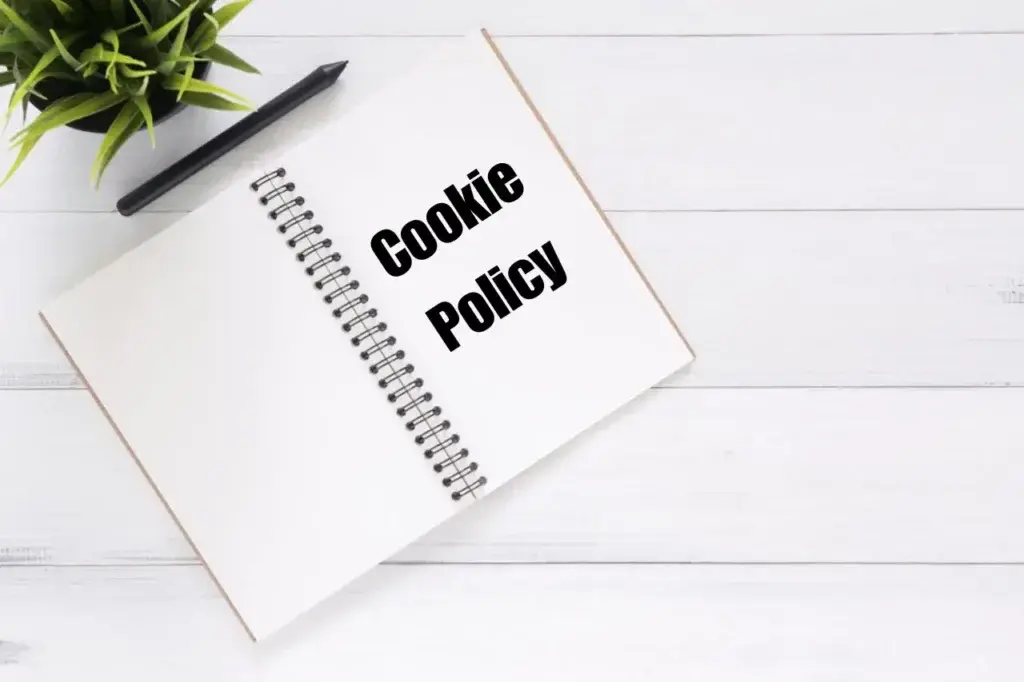
A cookie policy isn’t just a nice-to-have; in many regions (especially the EU), it’s a legal requirement for compliance with regulations like GDPR.
What to Include:
- A clear explanation of what cookies are and how your blog uses them.
- Information on third-party cookies (like Google Analytics, YouTube embeds, ad networks, etc.).
- How users can control or disable cookies in their browser.
- A statement that your visitors consent to cookie use by continuing to use the site.
You can often generate a basic cookie policy using a free online tool or plugin (many GDPR tools include this), but make sure it’s tailored to your blog’s setup.
Pro Tip: Pair your cookie policy with a visible cookie consent banner that allows visitors to accept or reject non-essential cookies. This helps keep you compliant and transparent. The Complianz plugin (free or paid) is a great option as it adds a prebuilt cookie policy page to your chosen menu as well as a pop-up cookie consent banner. Check out my full tutorial here on how to set it up if you decide to try it.
7. A Resources / Tools Page (Optional but Powerful)
This page is a win-win because it helps your readers by pointing them to your favourite tools, and it helps you earn through affiliate links if you join the affiliate programs for the tools you’re using. It’s also a great way to build trust by showcasing what actually works for you, not just what you’re paid to promote.
What to Include:
- A curated list of tools, platforms, or services you personally use and recommend.
- Categories like blogging tools, design tools, hosting, email marketing, etc.
- Short descriptions of each resource and how/why you use them.
- Clear affiliate disclosures (very important for compliance).
This page often becomes one of the most visited and shared, especially when it’s well-organised and genuinely helpful.
Pro Tip: Keep it updated! Outdated tools or broken links can damage credibility fast. Also, make it skimmable with visuals or bold headings so readers can quickly find what they need.
8. A Terms and Conditions Page (Optional but good for protection)
Think of your Terms and Conditions page as your blog’s rulebook. It lays out the ground rules for how people can use your content, what they can expect from you, and what you’re not responsible for.
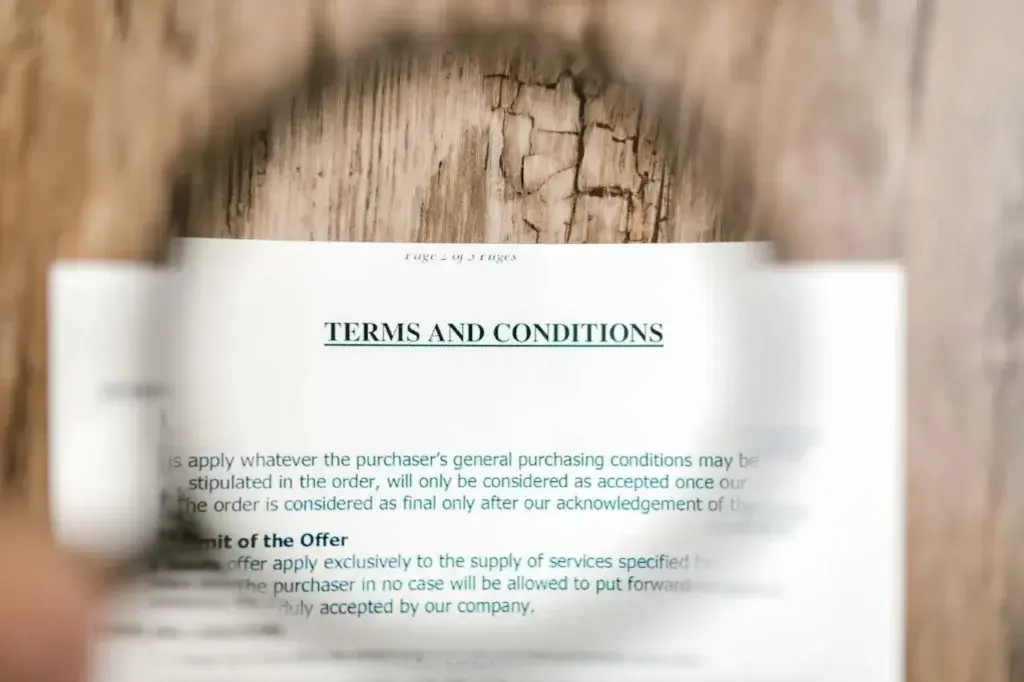
While it may not be the most glamorous page, it’s an essential piece of your blog’s legal foundation, especially if you’re offering products, services, or collecting user data.
What to Include:
- Ownership of content (making it clear that your content is protected by copyright).
- User responsibilities (no spamming, scraping, or misusing your content).
- Affiliate disclaimers or monetisation practices (if not covered elsewhere).
- Limitation of liability (you’re not responsible if someone misuses your advice or tools).
- Jurisdiction or governing law (usually where you’re located).
If you sell products, offer services, or have a membership area, you may also include refund policies, billing terms, and account guidelines here.
Pro Tip: Use a Terms & Conditions generator as a starting point, then customise it to reflect your specific blog setup and policies. It adds a layer of legal protection and shows your blog runs professionally.
Conclusion: Keep It Simple, Strategic & Safe
When you’re starting a blog, it’s tempting to obsess over design, plugins, and endless tweaks, but getting your core pages in place is one of the most important things you can do early on. Not only do these pages help your readers trust and navigate your site more easily, but they also lay the groundwork for SEO, legal protection, and monetisation.
You don’t need a dozen pages to look legit. Just focus on the essentials: the pages that build trust, deliver value, and protect your blog behind the scenes.
And seeing as most of them can be generated online using free tools or templates, you can have them up and running on your site in no time. So, before you get stuck down the design and features rabbit hole, get those all-important pages created and launch your site the right way from day one.
And if you get stuck or need more help with your pages, please feel free to let me know in the comments below and I’ll be more than happy to help you out.
Happy Page Creating!

You May Also Like
- What to Look for in a Blogging Platform – Beginner’s Guide
- Best Blogging Platforms for Beginners – Free & Paid
- Free Blogging Platforms Explained – Pros, Cons & Best Picks

